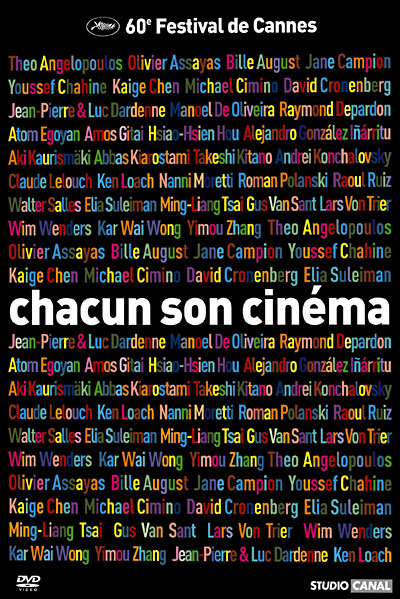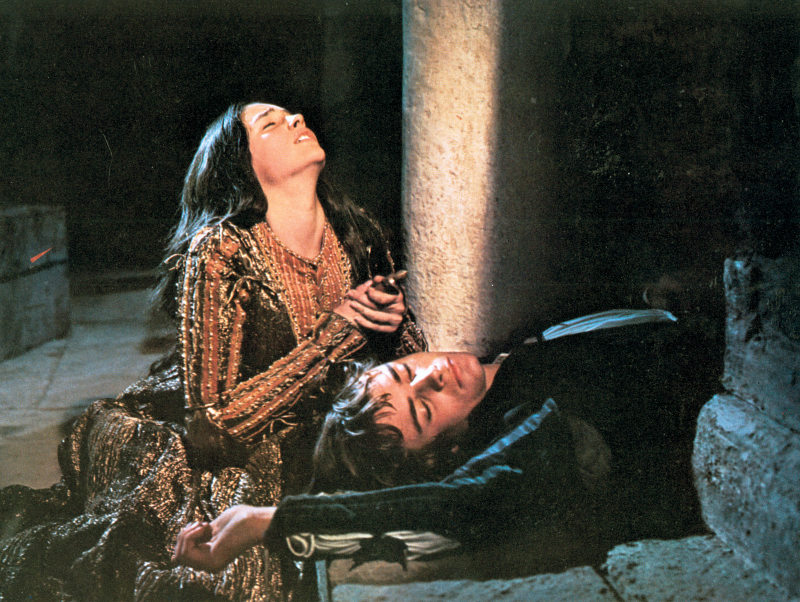In Iranian director Abbas Kiarostami’s “Where is my Romeo?” a cinema crowd of women, weeping, watch the tragic ending to Franco Zeffirelli’s film adaptation of Shakespeare’s “Romeo & Juliet” (click here to see it too). This is Kiarostami’s contribution to the Cannes organized anthology film Chacon son Cinema, where thirty six directors from around the world were invited to make short films of less than three minutes reflecting on their feelings about cinema.
Kiarostami’s work is often misleadingly simple, employing documentary techniques so that audiences might mistake the fictive for real. In “Where is my Romeo?” most of the women we watch tearfully watching the film are actresses. Does this undermine their reaction to the film, make the expression any less real? For Kiarostami, this short is thematically related to his next feature, Shirin, in which, too, women in an audience watch a film and weep. For that film Kiarostami, David Bordwell reports, “filmed his female actors . . . reacting to dots on a board above the camera! Indeed, Kiarostami claims he decided on the Shirin story [the performance only heard in the soundtrack of the film, never seen] after filming the faces.”
Similarly, Kiarostami has explained in interviews how in the films where he has a driver and a passenger talking in a car (Taste of Cherry, 10) he shot each part of the dialogue separately, half a conversation at a time, with him sitting opposite with a camera. Yet the dialogue in both films feels real, zinging with life and emotion far from any script or intervention on a director’s part. Why do we need the truth of the film to be based in reality and is it simply that we are left cheated voyeurs (they knew we were watching all along)?
Laura Mulvey, in her essay “Kiarostami’s Uncertainty Principle,” explores how, in his film Taste of Cherry, the director challenges the audience with ambiguity:
Kiarostami . . . draws attention to the way curiosity grows necessarily out of uncertainty and is indeed its counterpoint: here the spectator’s desire to know and understand is heightened by a conscious sense of uncertainty about even the truth or reality of what seems to be happening. And Kiarostami builds these spectator sensations into the aesthetics of his cinema, so the process of understanding (or not) is central rather than incidental.
This uncertainty is perhaps not as foregrounded in “Where is my Romeo?” coming second place to just the beauty of the actresses’ emotional reactions. Only when we wonder how the director could possibly have caught so many reactions to one screening of the film — wonder if he had needed over a dozen cameras — do doubt and uncertainty enter into it for Western audiences. Iranian audiences perhaps would recognize some of the actresses from the start, but, even then, could they be certain that these are not sincere reactions to the tragic death of Juliet (since, fairly, actresses have real emotions too).
Some reviewers cannot get past the emotions themselves. Nicholas de Villiers in his article in Senses of Cinema describes how Kiarostami’s short “lingers over the teary-eyed expressions of women watching the classic tragic romance (this feminine ‘weepy’ cliché is another common thread among several shorts [in To Each His Own Cinema], a rather hackneyed illustration of film’s power to move an audience).”
De Villiers misses the point though. Much of Kiarostami’s work plays with the boundary of public and private. When he focuses on women characters, he chooses to focus on women in public and finds, instead, private moments there. He composes his film 10 as ten short vignettes, conversations a woman driving in her car has with her son, her friend, a prostitute, a stranger. All very private conversations but while driving around Tehran. The actress who plays the protagonist in 10, Mania Akbari, was so inspired by this idea she directed and starred in 20 fingers, a film that is structured by various conversations a man and a woman have in public, mostly in moving vehicles too (a tram, a train, a motorcycle, a boat). De Villiers reads the emotions in “Where is my Romeo?” as a “ ‘weepy’ cliché,” and does not register this clash between the ostensible private moment of emotion in the public sphere of the cinema.
Richard Brody in The New Yorker sees even greater subtext in the choice of Zeffirelli’s Romeo & Juliet:
I watched it in my office and forgot to plug in headphones; a female colleague, hearing Juliet’s death throes (at forty seconds in), thought I was watching an erotic film. The mistake is accurate: Kiarostami’s conjunction of a woman’s pleasure and death is an implicit accusation of the repressive measures applied, particularly against women, in Iranian society. But the Prince’s roar, at 1:51, of the line “All are punished”—departing from Shakespeare’s text by repeating the phrase—speaks clearly for Kiarostami: the injustices done to women are done to all. The female spectators’ rapt terror at the spectacle reflects their personal implication in its subject, love rendered illicit.
These are not simple, documented displays of emotion and cannot be dismissed by de Villiers’s “weepy” misreading. To watch “Where is my Romeo?” is to witness a communion of the private emotional lives of an audience, “moving” for us as an audience in that sense of ending up somewhere different than from where we started. And yet the film continues to move us if we let it, into fraught, curious, and uncertain spaces between art and life, illusion and reality.
–R. W. Gray




The work also seems to be referencing the family v. family/tribe v. tribe/us v. them source of violence and the public/private nature of its tragedy.
A beautiful behind the scenes documentary that explains how Kiarostami works on the two films where he featured women in the audience:
http://www.youtube.com/watch?v=K4EeiAa5o2Y&feature=related